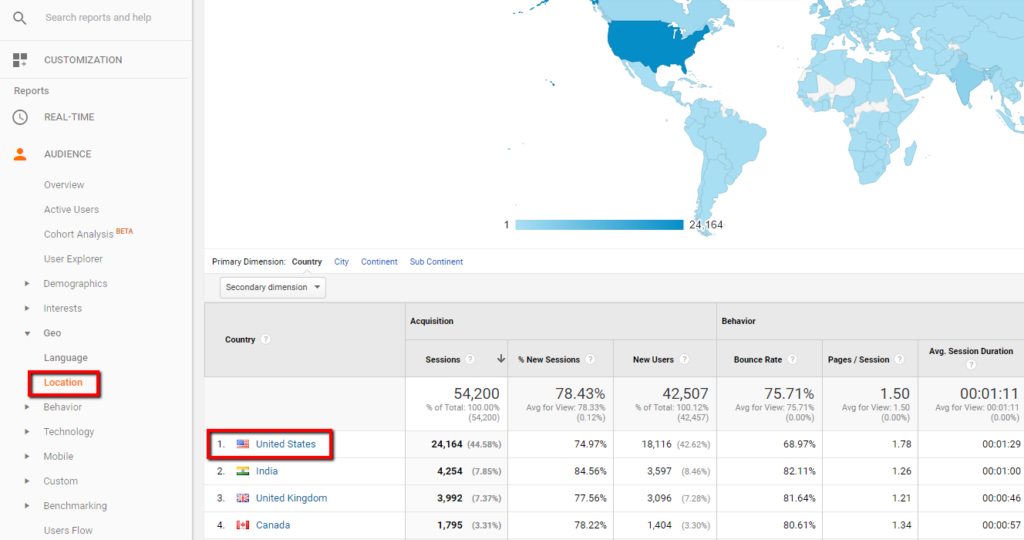The Power of Google Analytics Secondary Dimension: Making The Most Of Insights
Wiki Article
Unlocking the Power of Additional Dimension Analytics for Boosted Data Insights and Decision-Making
In the realm of data analytics, key measurements typically take the spotlight, however the true deepness of understandings lies within the world of second dimensions. These added data points use a nuanced viewpoint that can illuminate patterns and partnerships not easily obvious initially glance. By utilizing the power of additional dimension analytics, organizations can introduce concealed trends, uncover correlations, and essence extra significant final thoughts from their information. The possibility for boosted decision-making via the use of these secondary dimensions is huge, promising a deeper understanding of complex data collections and leading the way for even more educated calculated selections.
Significance of Second Measurements
Checking out the significance of secondary measurements in analytics reveals the hidden layers of data understandings essential for educated decision-making in different domains. Additional dimensions offer a much deeper understanding of key information by offering extra context and viewpoints. By including second dimensions into analytics, organizations can draw out much more comprehensive and nuanced understandings from their datasets.One secret importance of additional measurements is their ability to sector and categorize key information, allowing for a much more comprehensive analysis of specific parts within a dataset. When looking at the data as a whole, this segmentation allows organizations to recognize patterns, trends, and outliers that could not be obvious. Moreover, secondary measurements assist in discovering connections and dependencies in between various variables, bring about more accurate forecasting and predictive modeling.
In addition, additional dimensions play an essential role in enhancing information visualization and coverage. By adding second dimensions to visualizations, such as graphs or charts, experts can develop extra insightful and informative depictions of data, facilitating much better communication of findings to stakeholders. On the whole, the assimilation of second measurements in analytics contributes in unlocking the full potential of information and driving evidence-based decision-making.
Secret Advantages of Using Additional Dimensions
Making use of second dimensions in analytics provides companies a tactical benefit by enhancing the deepness and granularity of information understandings. By studying information utilizing second dimensions such as time, place, device kind, or customer demographics, organizations can reveal patterns, trends, and relationships that may or else stay surprise.Additionally, the usage of additional measurements improves the context in which primary information is analyzed. By leveraging second dimensions in analytics, companies can harness the full possibility of their data to drive better decision-making and attain their service goals.
Advanced Information Evaluation Strategies
A deep dive into sophisticated information evaluation methods exposes advanced approaches for drawing out useful understandings from complicated datasets. One such technique is artificial intelligence, where formulas are utilized to identify patterns within information, anticipate outcomes, and make data-driven choices. This approach enables for the automation of logical design building, making it possible for the processing of large volumes of information at a much faster pace than standard approaches.One more sophisticated method is predictive analytics, which makes use of analytical formulas and artificial intelligence techniques to forecast future end results based on historic information. By evaluating patterns and fads, organizations can prepare for consumer habits, market fads, and prospective dangers, empowering them to make positive choices.
Moreover, text mining and view analysis are useful methods for drawing out insights from unstructured data sources such as social media sites remarks, client evaluations, and survey reactions. By assessing message data, organizations can understand consumer opinions, identify emerging fads, and boost their services or products based on responses.
Enhancing Decision-Making With Additional Measurements

Enhancing decision-making with second measurements makes it possible for services to make even more educated and targeted strategic options. By segmenting customer data based on secondary dimensions like purchasing history or involvement degrees, business can tailor their advertising and marketing strategies to details target market sectors, leading to boosted conversion prices and client complete satisfaction. Second dimensions can aid determine connections and relationships between different variables, allowing organizations to make data-driven decisions that drive development and profitability.
Executing Additional Dimension Analytics
When including second measurements in analytics, companies can unlock deeper insights that drive strategic decision-making and enhance general efficiency. This requires understanding the particular concerns the organization seeks to address and the data factors required to address them.
In addition, companies need to take advantage of progressed analytics tools and innovations to improve the process of including second dimensions. These tools can automate information handling, evaluation, and visualization, permitting companies to concentrate on translating insights instead of hands-on information control.
Conclusion
Finally, second dimension analytics play an important role in improving information insights and decision-making processes. By utilizing innovative data evaluation techniques and applying additional measurements effectively, organizations can unlock the power of their data to drive critical business choices. The vital benefits of using second dimensions can not be overstated, as they give a deeper understanding of information patterns and connections. It is important for companies to utilize secondary dimension analytics to stay affordable in today's data-driven landscape. look at hereIn the world of data analytics, primary dimensions commonly take the spotlight, but the real depth of insights lies within the realm of additional measurements.Making use of second measurements in analytics supplies companies a tactical benefit by increasing the depth and granularity of information understandings. By leveraging additional measurements in analytics, organizations can harness the full possibility of their check over here data to drive better decision-making and accomplish their service purposes.
Executing data validation procedures and routine audits can help maintain information quality and dependability.
By utilizing sophisticated information analysis methods and applying additional dimensions effectively, organizations can open the power of their information to drive critical company decisions.
Report this wiki page